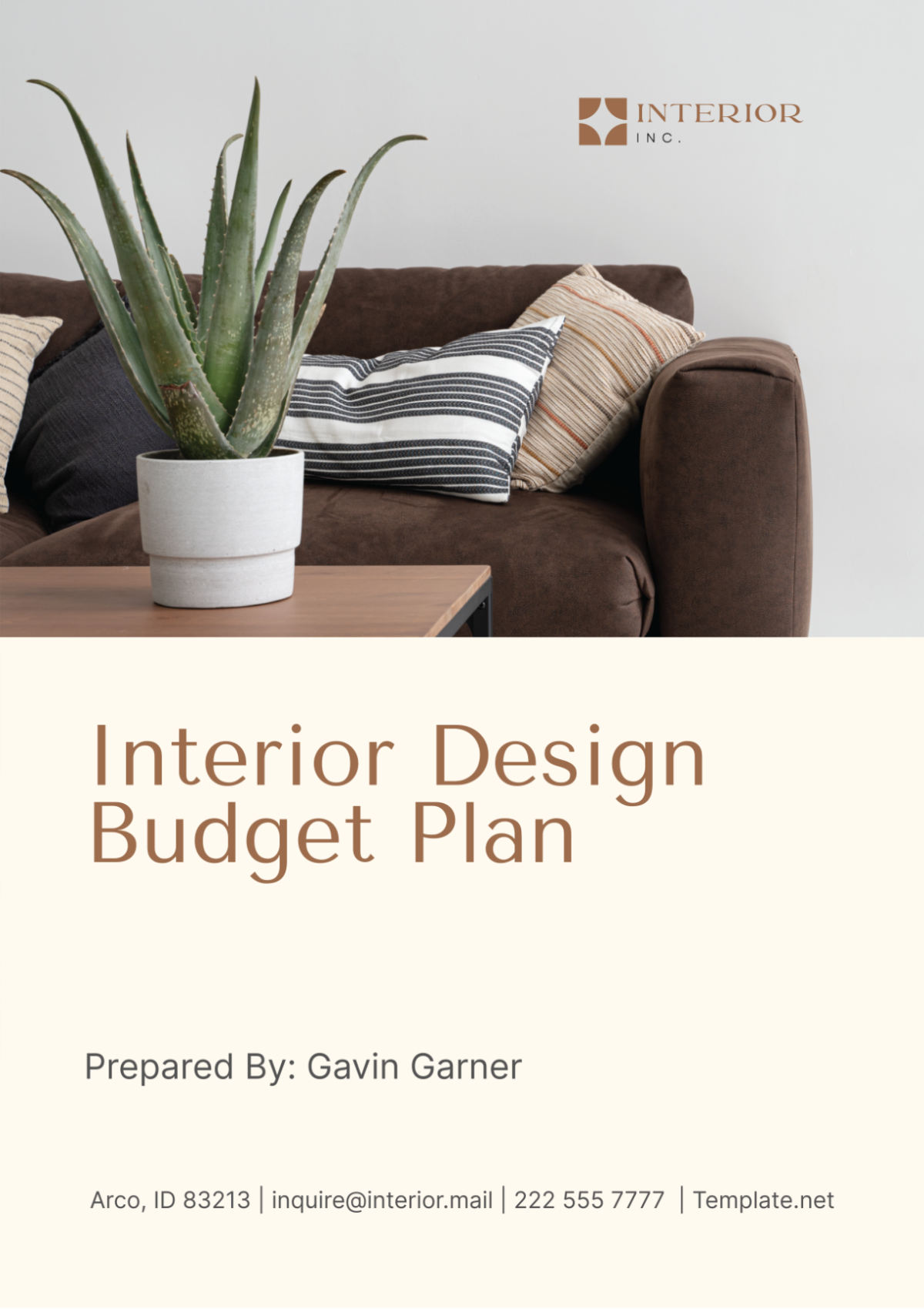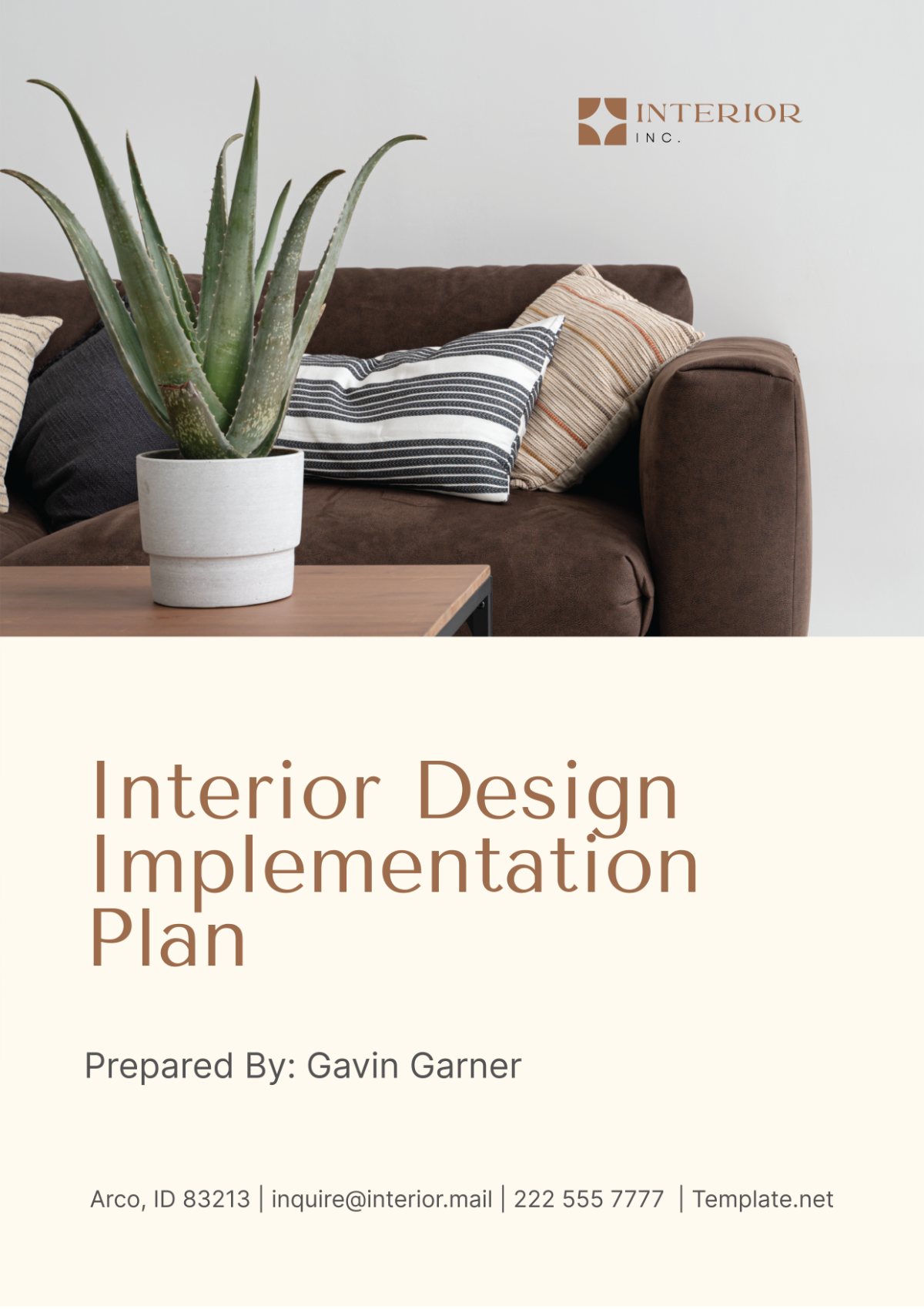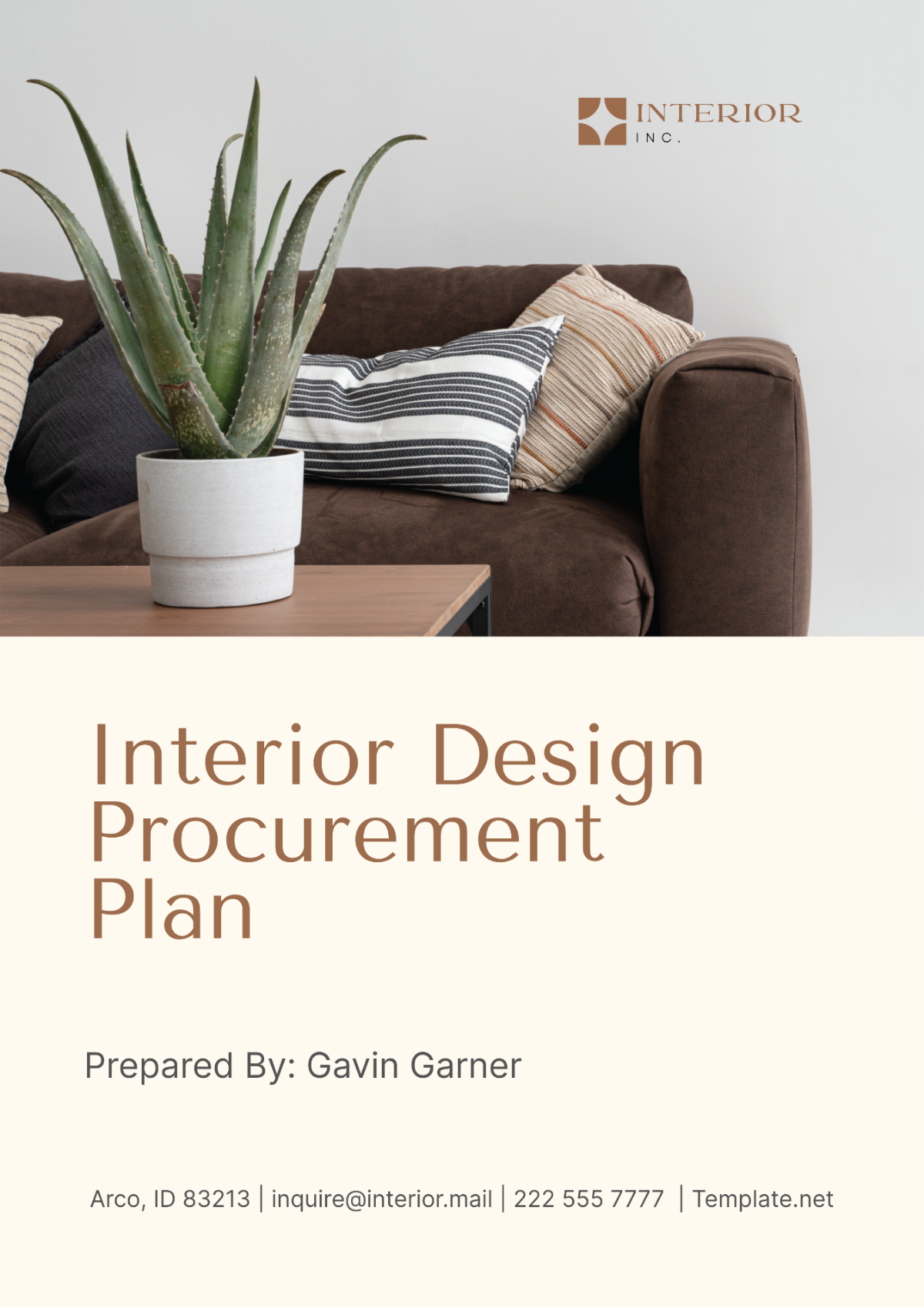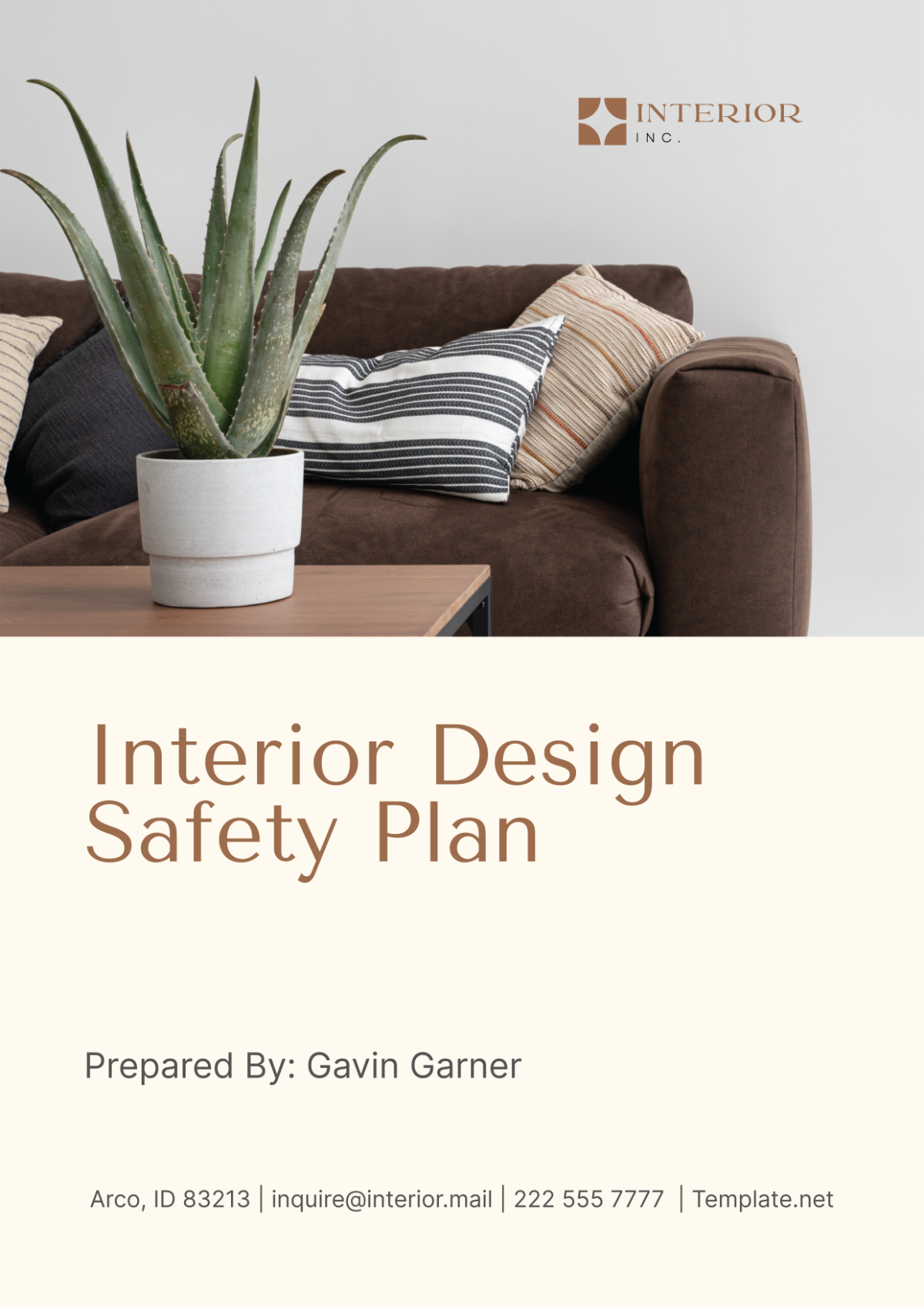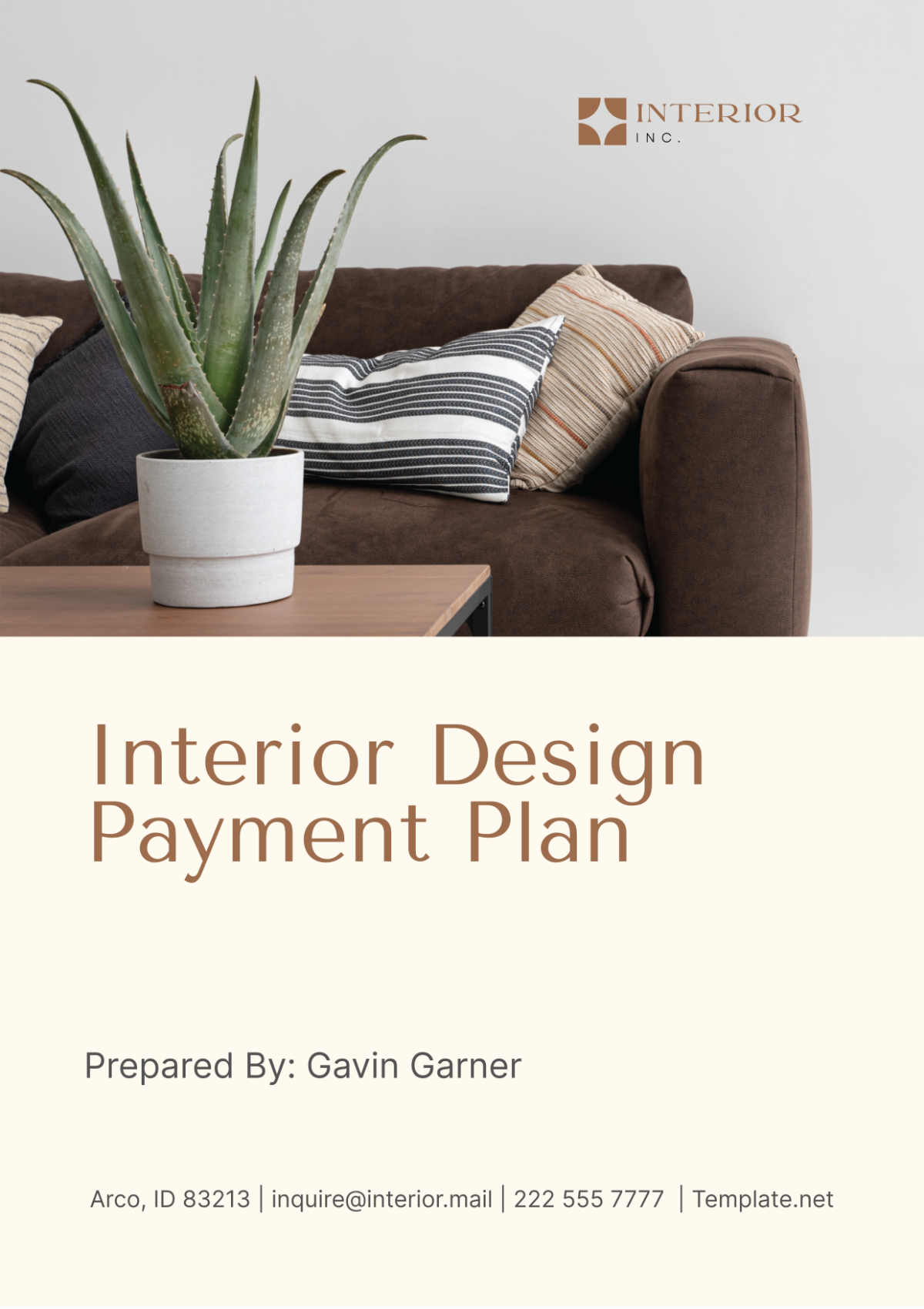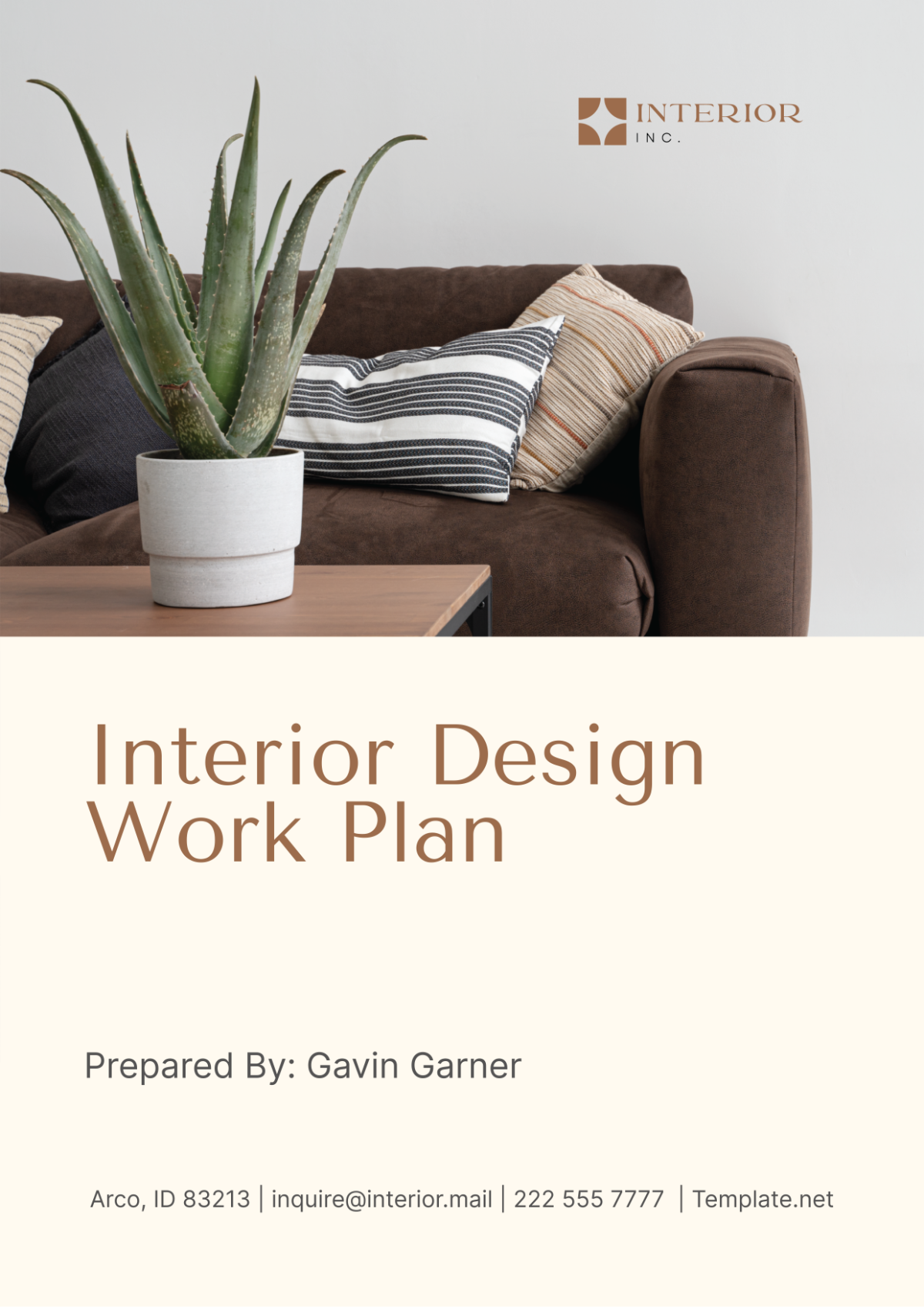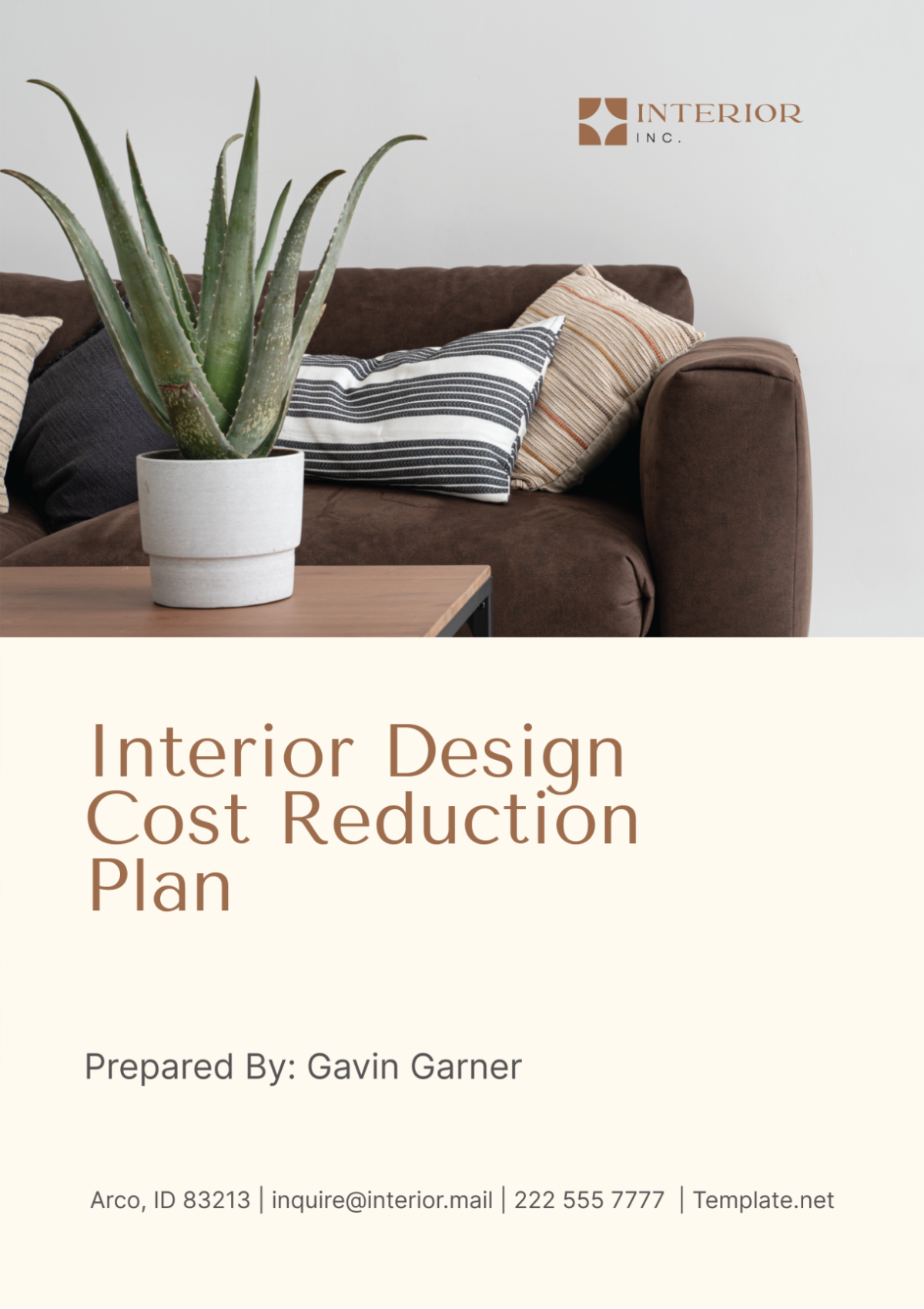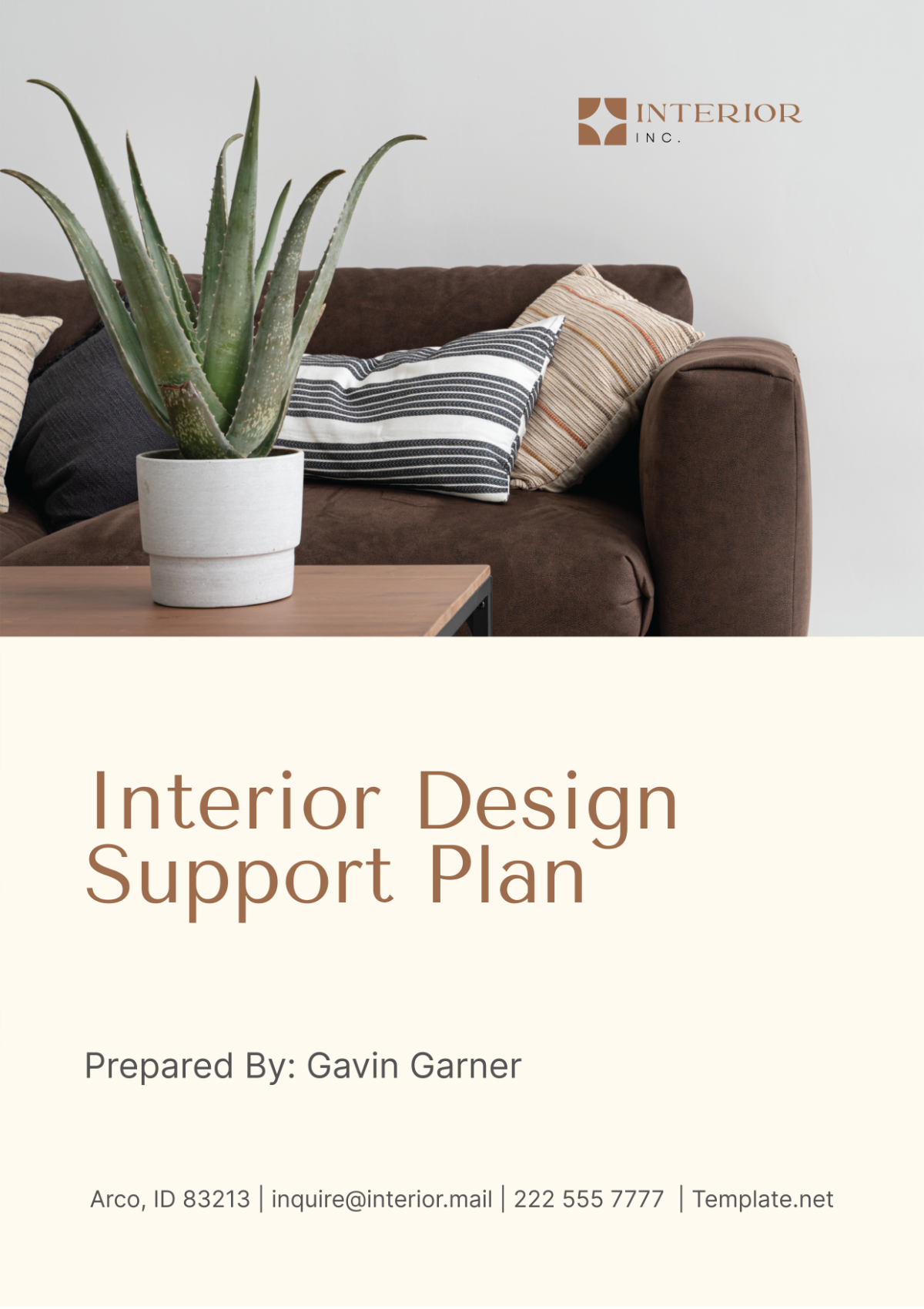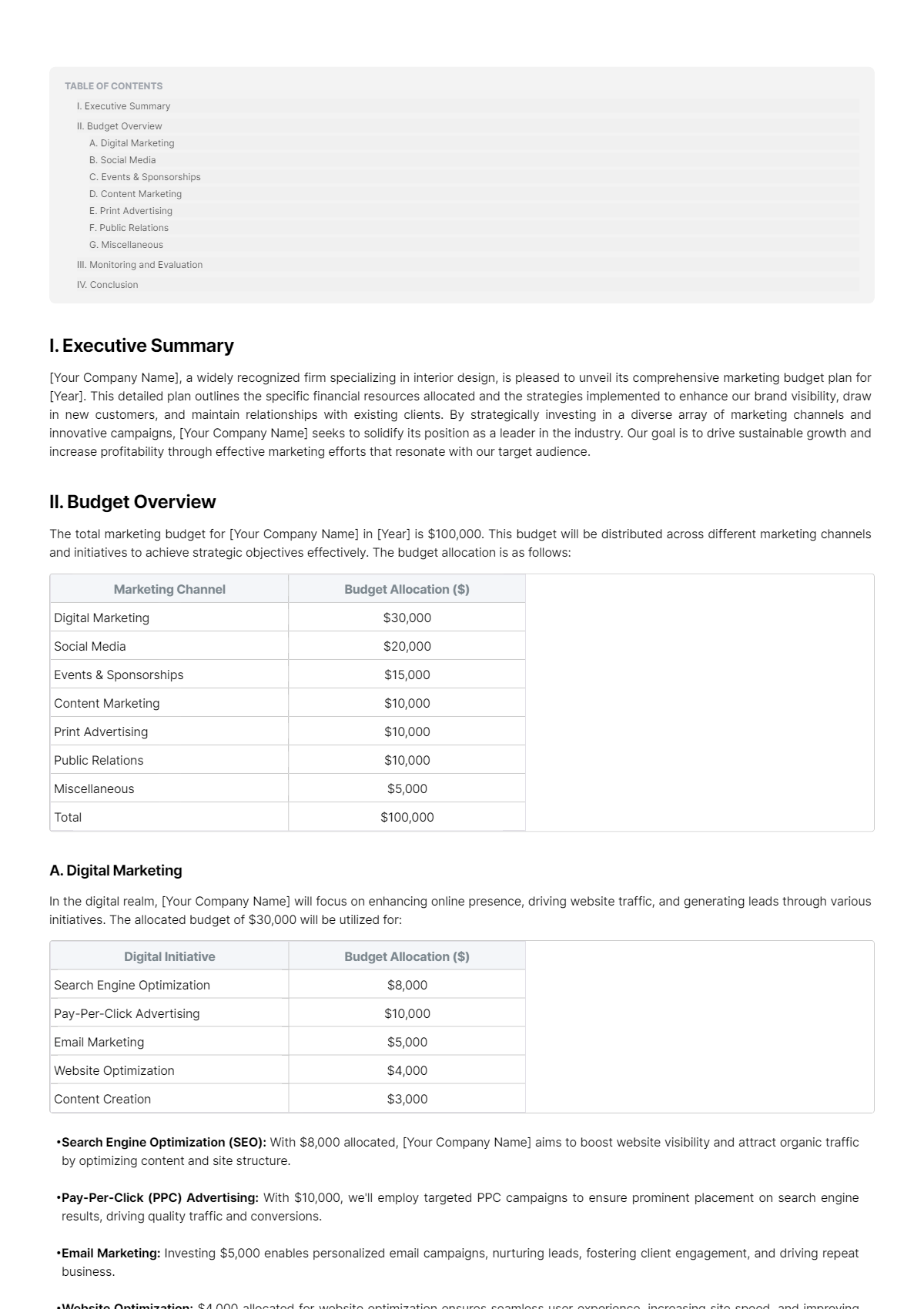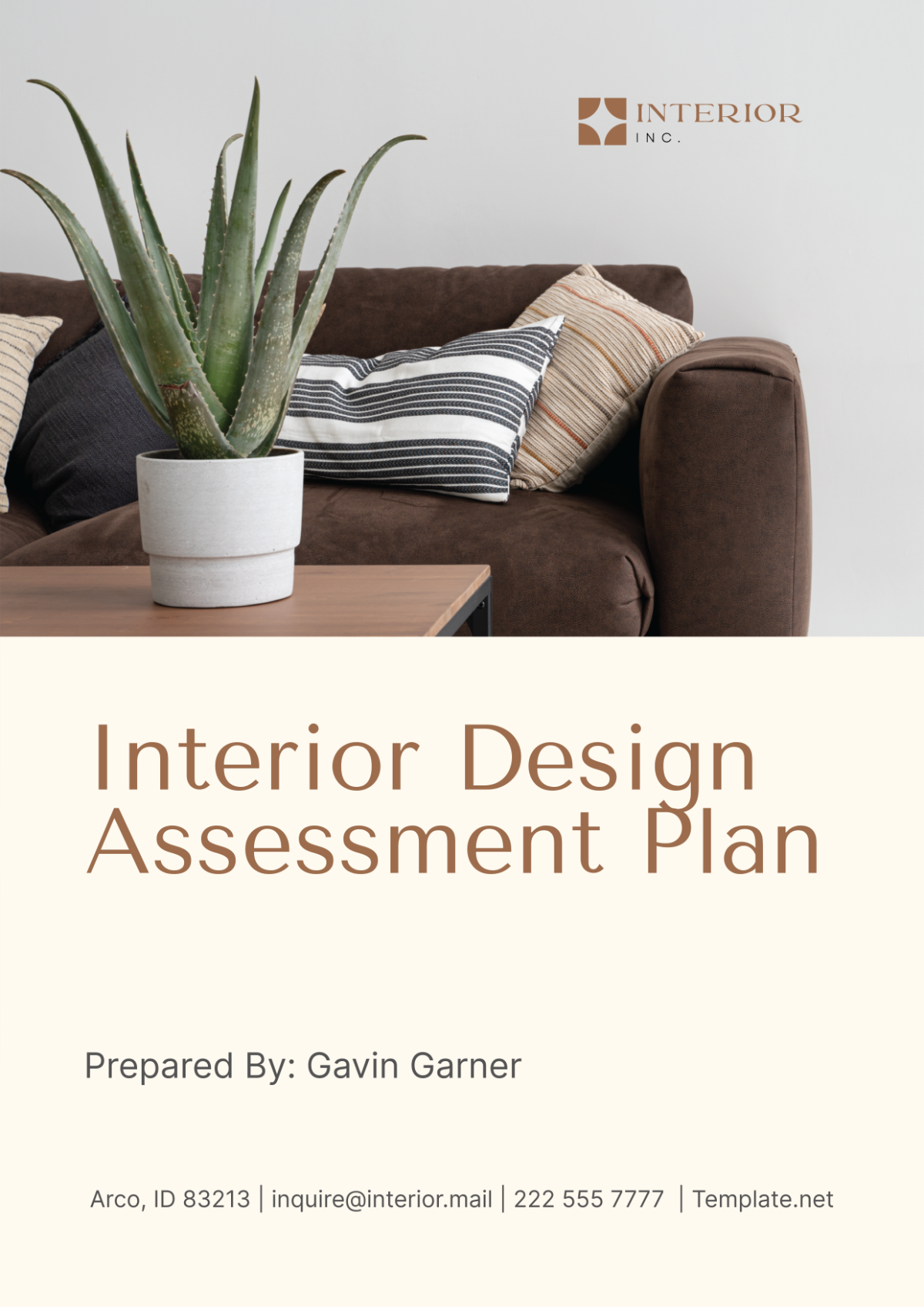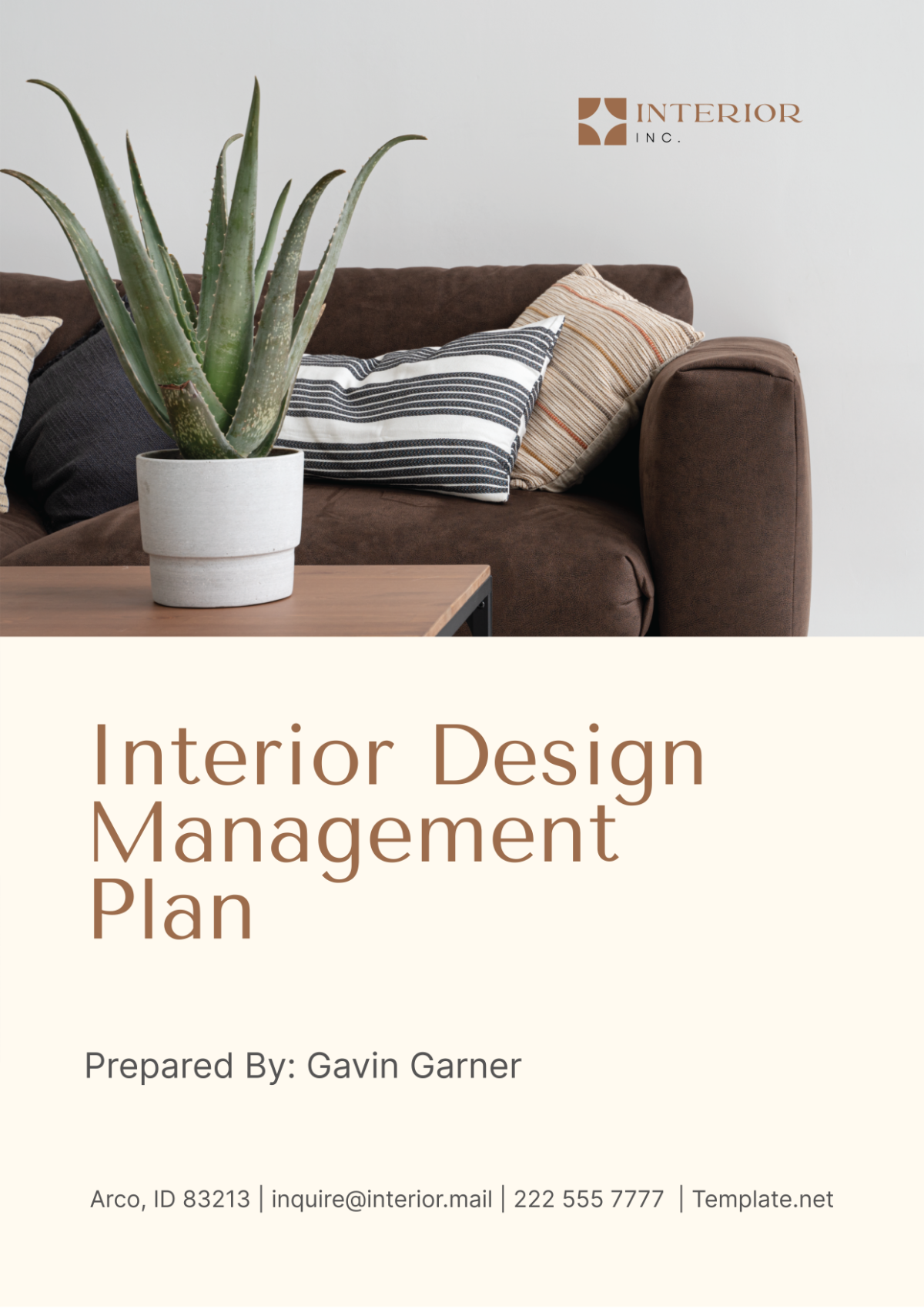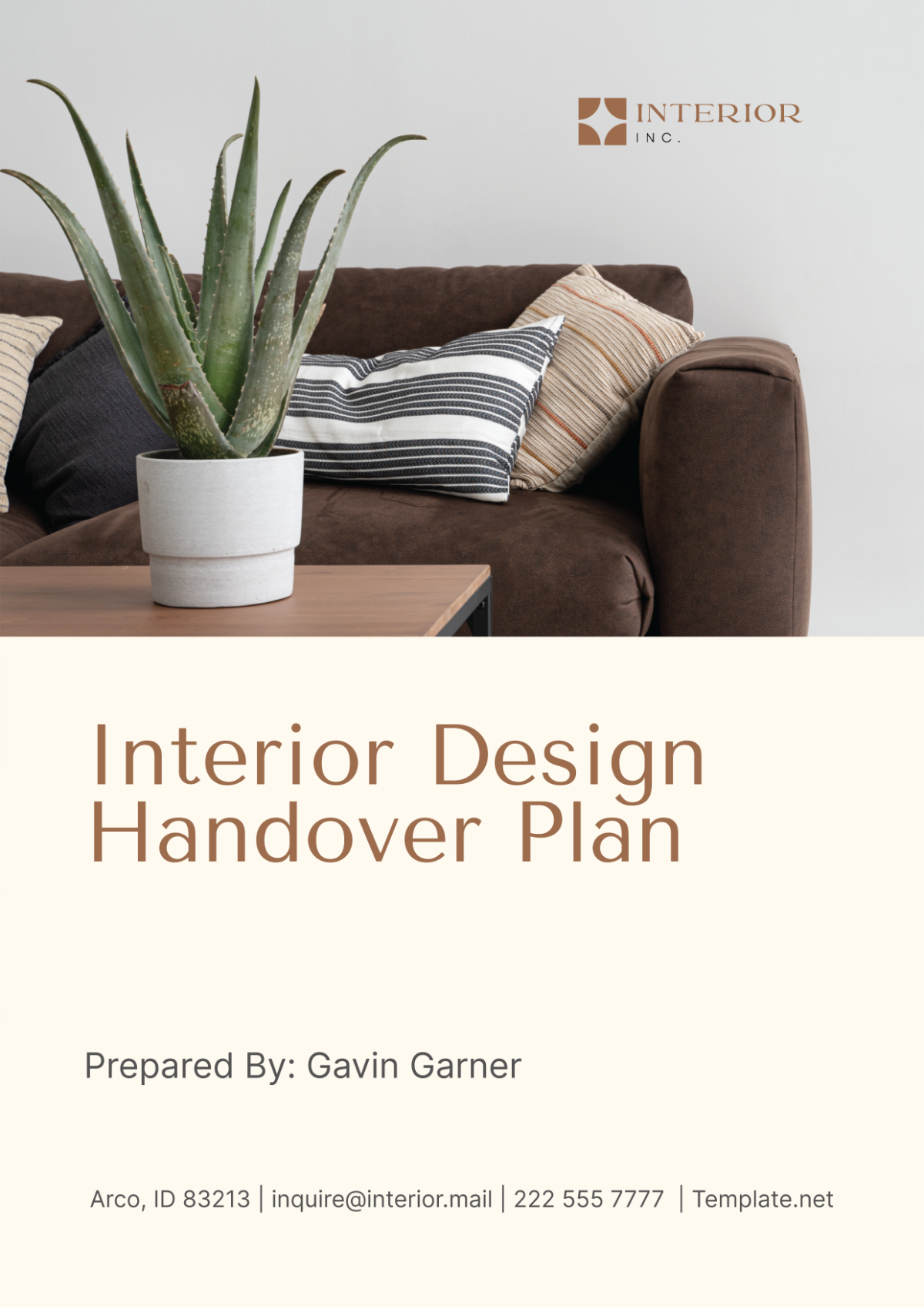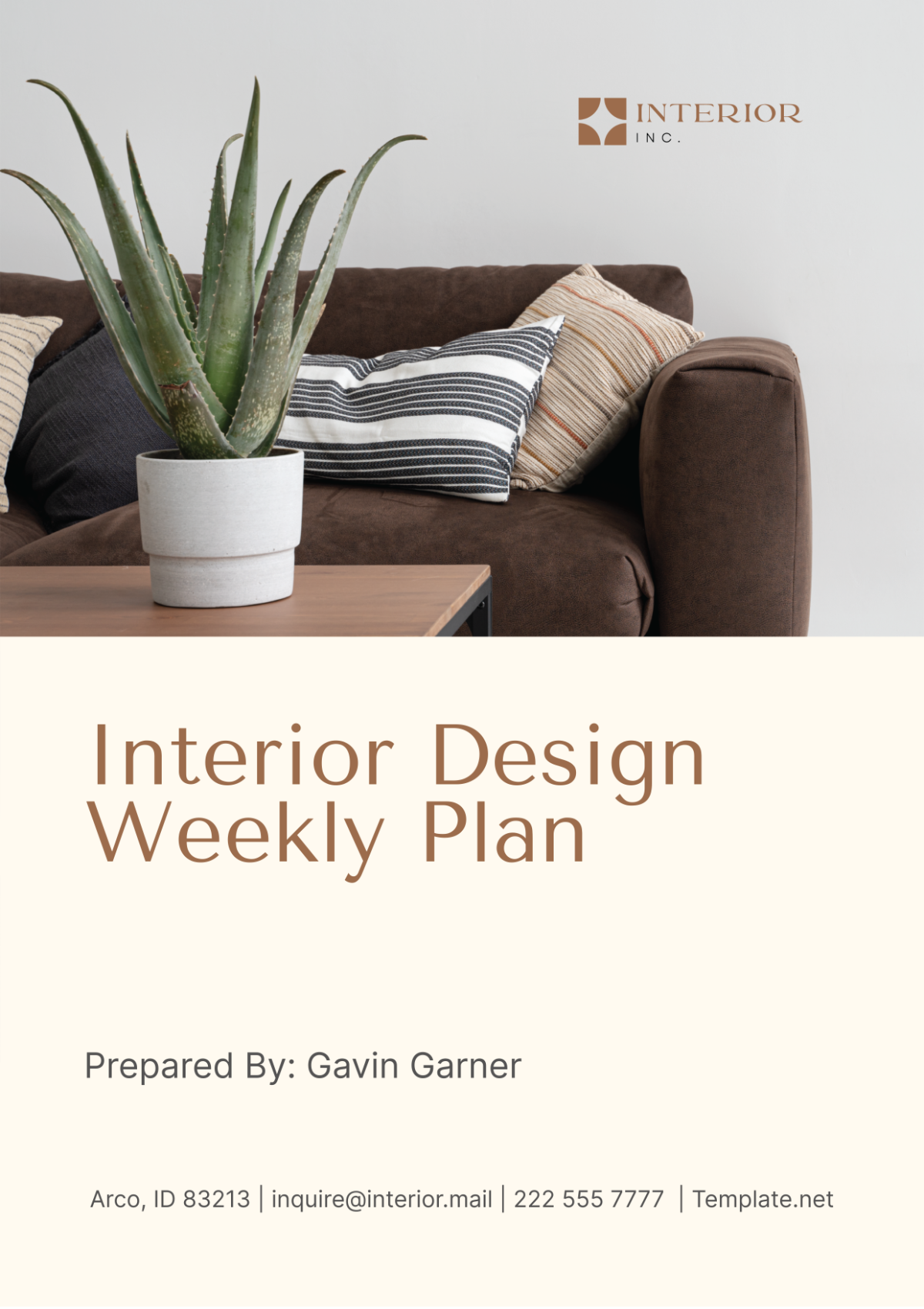I. Introduction
A. Overview
Purpose
The purpose of this Interior Design Implementation Plan is to outline the steps and procedures involved in executing [Your Company Name]'s interior design projects. It aims to provide a structured approach to achieve successful implementation while meeting client requirements and expectations.
Objectives
Define the scope and timeline of the interior design project.
Allocate resources effectively to ensure project completion within budget and schedule.
Mitigate risks and address challenges proactively to minimize project delays.
Maintain clear communication channels with stakeholders to facilitate collaboration and feedback.
Evaluate project performance and gather insights for continuous improvement.
B. Scope
Inclusions
Design conceptualization and development.
Material selection and procurement.
Construction and installation.
Post-construction walkthrough and handover.
Exclusions
Structural modifications requiring architectural expertise.
Electrical and plumbing work beyond cosmetic changes.
C. Key Stakeholders
[Your Company Name]
Project Managers
Interior Designers
Procurement Team
Interior Design Team
5 Senior Designers
8 Junior Designers
3 Drafters
2 Quality Control Inspectors
Client
Project Sponsor
End Users
Facilities Management Team
II. Project Planning
A. Timeline
Milestones | Target Dates | Responsible Party |
|---|---|---|
Kick-off Meeting | [Date] | Project Manager |
Concept Design Presentation | [Date] | Interior Design Team |
Final Design Approval | [Date] | Client |
Implementation Phase | [Date] | Project Team |
B. Resource Allocation
Human Resources
Designers
3 Senior Designers
5 Junior Designers
Project Managers
2 Project Managers
3 Assistant Project Managers
Contractors
10 Construction Workers
5 Installers
Budget Allocation
Item | Budget Allocation ($) |
|---|---|
Materials | [$100,000] |
Labor | [$150,000] |
C. Risk Assessment
Identification
Delays in material delivery.
Changes in client requirements.
Budget overruns.
Mitigation Strategies
Maintain regular communication with suppliers.
Document and track all client requests for change orders.
Monitor project expenses closely and adjust as necessary.
Contingency Plan
Allocate a buffer in the project schedule to accommodate unforeseen delays.
Negotiate with suppliers for expedited delivery options.
Identify alternative materials or vendors for critical items.
III. Design Development
A. Conceptualization
Client Brief
Gather requirements from the client regarding design style, preferences, and functional needs.
Mood Boards
Create visual representations of design concepts, including color palettes, textures, and furniture styles, to present to the client.
Initial Sketches
Develop preliminary sketches and floor plans based on client input and mood board feedback.
B. Detailed Design
CAD Drawings
Translate initial sketches into detailed computer-aided design (CAD) drawings, including precise measurements and material specifications.
Material Selection
Research and select appropriate materials, finishes, and furnishings based on design requirements, budget constraints, and durability.
Color Schemes
Finalize color schemes for walls, flooring, and furnishings to achieve desired aesthetic and mood.
C. Client Review
Presentation Meeting
Present CAD drawings, material samples, and color schemes to the client for review and approval.
Feedback Incorporation
Incorporate client feedback and revisions into the design plans, ensuring alignment with client vision and expectations.
IV. Implementation
A. Pre-Construction Phase
Site Assessment
Conduct on-site visits to assess existing conditions, identify any potential challenges, and take accurate measurements.
Procurement
Procure materials, furniture, and fixtures according to approved design plans and project schedule.
B. Construction Phase
Timeline Execution
Coordinate construction activities, including demolition, installation of new features, and finishing work, to adhere to the project timeline.
Quality Control
Implement quality control measures to ensure workmanship meets standards and specifications, addressing any issues promptly.
C. Post-Construction Phase
Final Walkthrough
Conduct a comprehensive walkthrough with the client to inspect completed work, address any concerns, and ensure satisfaction.
Handover to Client
Formalize handover of the project to the client, including providing relevant documentation, warranties, and maintenance instructions.
Maintenance Plan
Provide the client with a maintenance plan outlining recommended upkeep tasks and schedules to preserve the integrity and aesthetics of the design.
V. Communication Plan
A. Internal Communication
Team Meetings
Schedule weekly team meetings every Monday morning to discuss project updates, address any challenges, and assign tasks for the week ahead. Ensure all team members attend and encourage active participation to foster collaboration and problem-solving.
Progress Reports
Generate detailed progress reports every Friday afternoon summarizing the week's accomplishments, upcoming milestones, budget status, and any deviations from the original project plan. Distribute these reports to all project stakeholders, including project managers, designers, and executives, to keep everyone informed and aligned.
B. Client Communication
Scheduled Updates
Establish a bi-weekly communication schedule with the client, scheduling update meetings every other Wednesday morning. During these meetings, provide the client with progress updates on design development, construction activities, and any issues or concerns that need to be addressed. Ensure transparency and proactive communication to build trust and confidence in [Your Company Name]'s ability to deliver.
Issue Resolution
Implement a responsive communication protocol for addressing client concerns or issues as they arise. Designate a dedicated point of contact within the project team to promptly address client inquiries and ensure timely resolution of any issues. Maintain open lines of communication through email, phone calls, and regular meetings to ensure that client expectations are met and exceeded throughout the project lifecycle.
VI. Evaluation
A. Performance Metrics
Client Satisfaction
Conduct post-project surveys with clients to gather feedback on various aspects of the project, including communication effectiveness, design quality, timeliness of delivery, and overall satisfaction with the final result. Analyze survey responses to identify areas of strength and opportunities for improvement, and incorporate client feedback into future project planning and execution.
Budget Adherence
Compare actual project expenditures against the budget allocation on a monthly basis to monitor financial performance. Identify any budget variances and investigate the root causes, such as unexpected expenses or scope changes. Develop strategies to mitigate budget risks and optimize resource allocation for future projects to ensure profitability and financial sustainability.
Timely Delivery
Track project timelines closely using a project management software tool, monitoring key milestones and deadlines to ensure timely delivery of project phases. Conduct regular progress reviews with the project team to identify any delays or bottlenecks and implement corrective actions to keep the project on track. Analyze project schedules to identify opportunities for process optimization and efficiency improvements to enhance future project delivery.
B. Lessons Learned
Successes
Celebrate project successes and achievements during a team debriefing session held at the conclusion of each project. Recognize team members' contributions and accomplishments, highlighting successful strategies, innovative solutions, and outstanding performance. Document best practices and success stories to share with the wider team and incorporate into future project planning and execution.
Areas for Improvement
Facilitate a candid discussion during the team debriefing session to identify areas for improvement and lessons learned from project challenges and setbacks. Encourage team members to provide constructive feedback on areas such as communication breakdowns, process inefficiencies, and missed opportunities. Collaboratively develop action plans to address identified weaknesses and implement continuous improvement initiatives to enhance [Your Company Name]'s project delivery capabilities.
C. Feedback Collection
Client Survey
Develop a comprehensive client survey questionnaire covering various aspects of the project experience, including initial consultation, design development, construction implementation, and post-project support. Distribute the survey to clients upon project completion and analyze the feedback received to identify areas of strength and opportunities for improvement. Use survey insights to refine service offerings, enhance client satisfaction, and strengthen client relationships.
Team Debrief
Schedule a team debriefing session following the completion of each project to reflect on the project's successes and challenges. Facilitate an open and constructive discussion among team members to share perspectives, insights, and lessons learned from the project. Encourage team members to offer suggestions for process improvements and collaboratively develop action plans to address identified areas for enhancement. Document key takeaways from the debriefing session and incorporate them into ongoing professional development and process refinement efforts to drive continuous improvement and excellence in project delivery.


